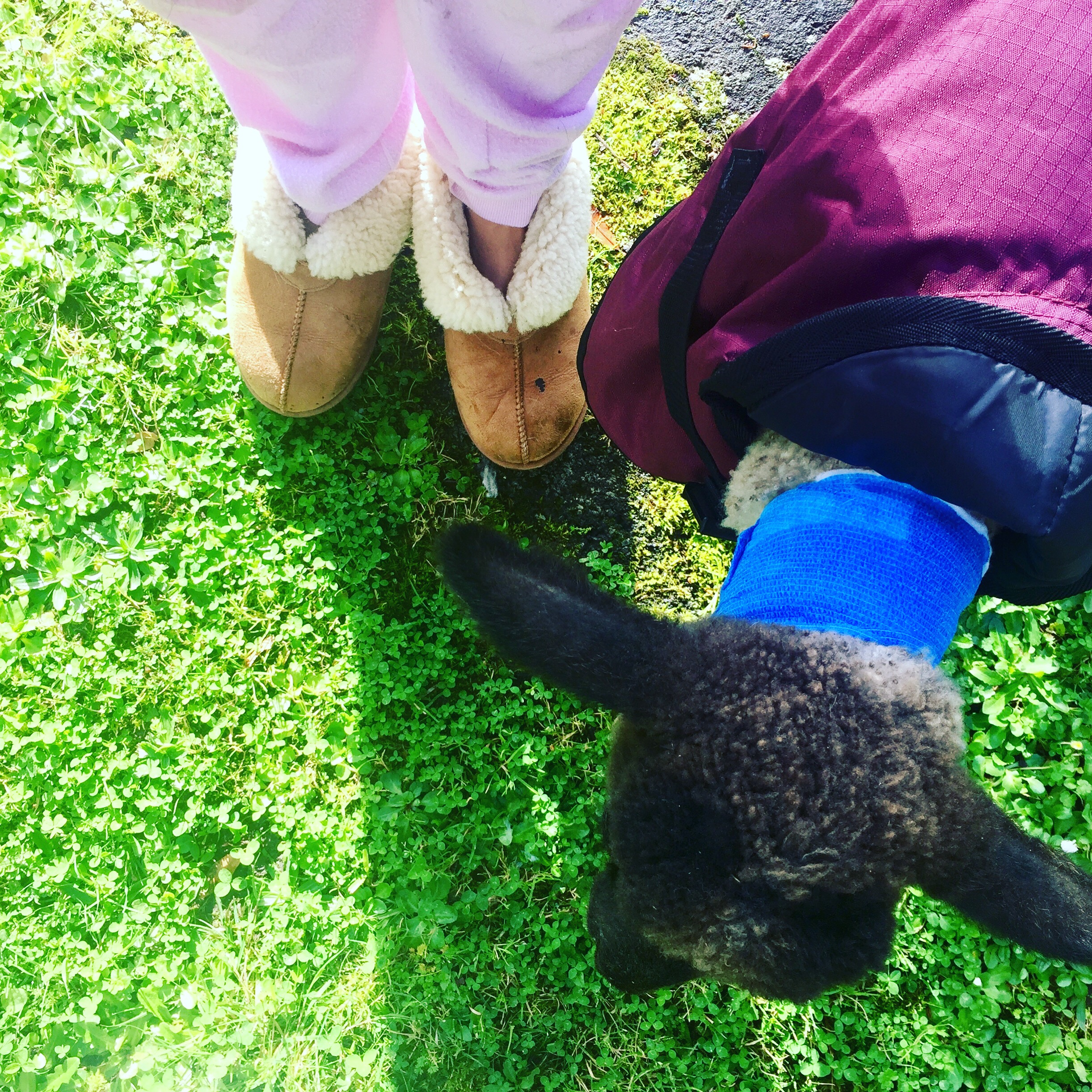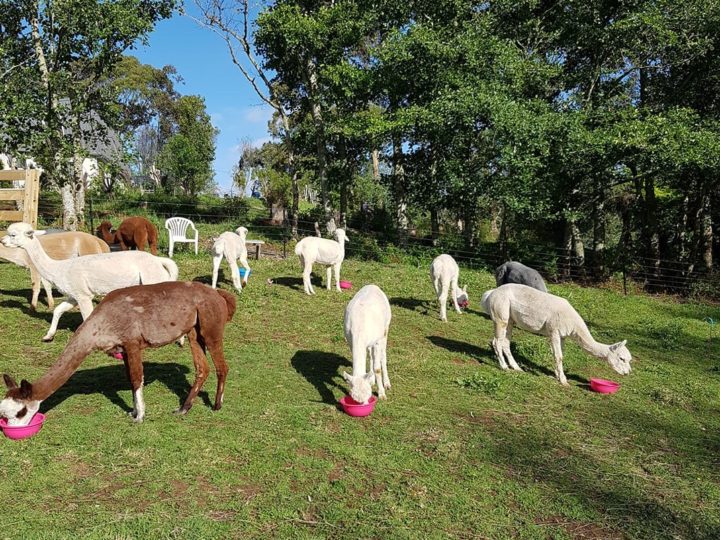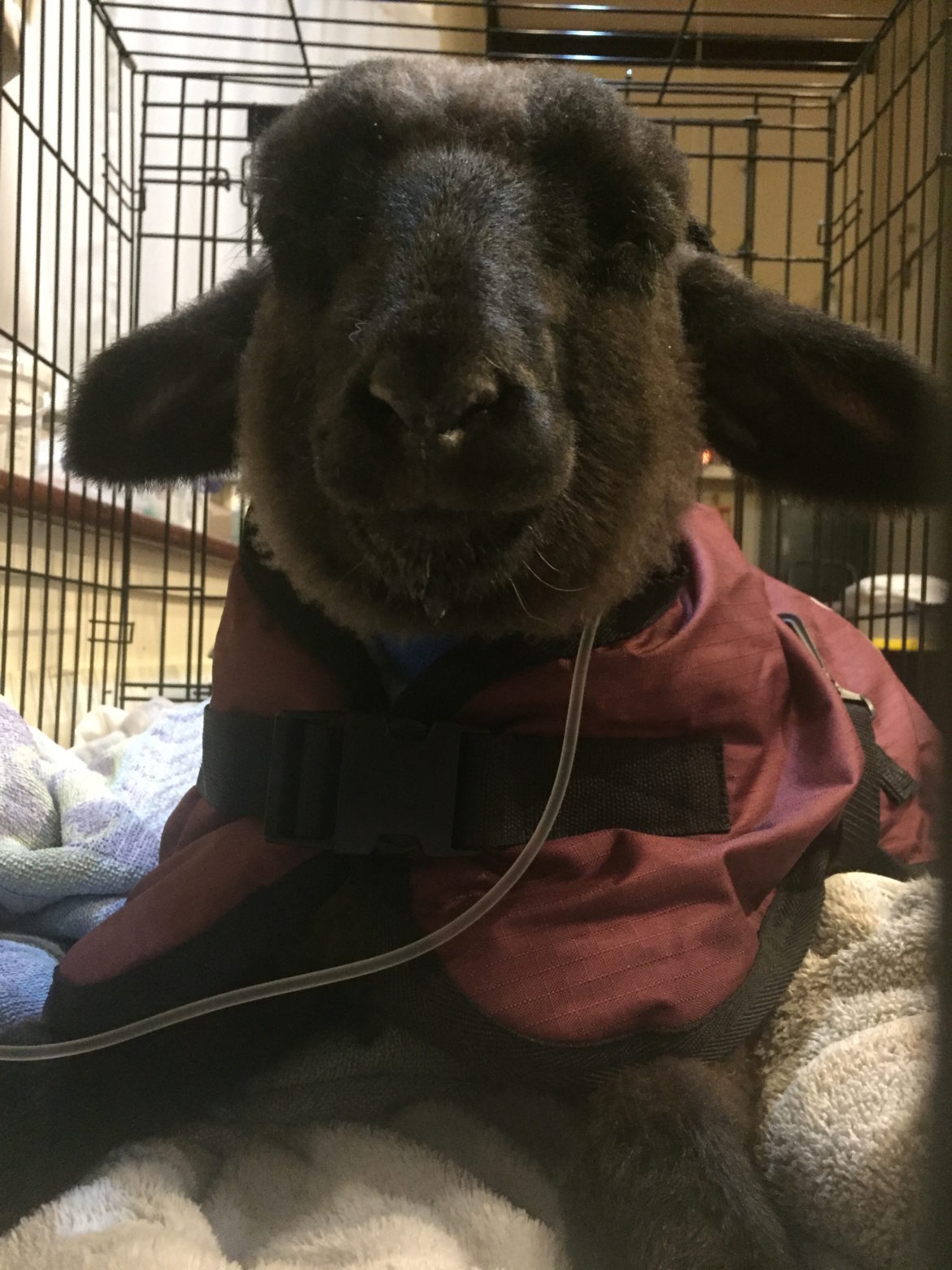
Shelton’s and his Polioencephalomalaia (PEM):
Meet Shelton, a gorgeous little lad that was born via caesarean section about 12 weeks ago. You may actually have literally seen the video of him being pulled out of the uterus by us if you’ve been watching our Facebook posts. After being abandoned by his mother, he had a rather rocky start to life. Luckily he has been well cared for by numerous surrogate human mothers over the last 12 weeks. The Rock radio station even named him Shelton Woolright, after a famous NZ drummer.
All was going well for little Shelton until he suddenly became ill. Shelton demonstrated the following symptoms:
- lethargy
- vomiting
- was walking as if he was drunk (ataxia)
- refused to take his bottle or eat any grass
After a few hours of this behaviour he could no longer stand and his head and neck started to arch back until they touched his back. Some farmers will call this the dying swan pose, others will know it as ‘stargazing’. Feel free to google ‘stargazing sheep’ to gain a better understanding of what this looks like.
Shelton was popped in the car and was rushed to The Lifestyle Vet. On arrival he had started to seizure and his eyes were continuously flickering from left to right and he was heavily grinding his teeth. We call this eye flickering motion nystagmus, and it is a classic clinical sign of neurological disease. The stargazing position he was in with all four legs extended and head arched back was also an immediate indication to us that he was suffering from neurological disease.
What is Stargazing?
Stargazing occurs when the animal is suffering from neurological disease caused by a condition called polioencephalomalacia (PEM). Polioencephalomalacia, translated from latin, means damage to the grey matter nerve cells of the cerebrum (part of the brain). PEM has been historically caused by a thiamine (B1 vitamin) deficiency, but it is now also widely recognised that ingesting plants or compounds high in sulphur can also cause PEM. Unfortunately we didn’t manage to get a picture of Shelton in his stargazing pose because we were so focussed in getting an emergency intravenous catheter into his jugular vein so that we could administer some emergency medications.
How does the animal become deficient in B1 Vitamins?
There are millions of ‘good’ bacteria that live inside the rumen (first stomach compartment) of ruminants. These important bacterial organisms are essential in enabling the animal to digest and break down plant material, and we call this the ruminal microflora. Not only does the ruminal microflora digest plant material but it also synthesises B1 vitamins in the process. Anything that disturbs the normal functioning of these microbes (rumenitis, acidosis, bloat, or general inappetence during illness) can reduce the synthesis of these important B1 vitamins.
Why are B1 vitamins so important?
The nerve cells of the brain (neurons) are 100% dependent on B1 vitamins for normal brain functioning. Inappetence or any disease process that damages the microflora can reduce vitamin B1 supply to these nerves, resulting in neurological disease. When the brain runs out of B1 vitamins, it starts to swell. We call this brain swelling cerebral oedema, and if left untreated, it can damage the brain tissue resulting in permanent neurological disease.
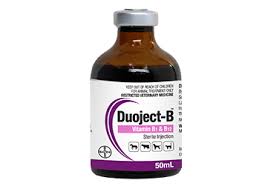
Back to Shelton….
The moment Shelton walked through our door we presumptively diagnosed him with PEM. We inserted an intravenous catheter directly into his jugular vein and within 2 minutes of his arrival we had given him 5ml of Duoject, a vitamin B1 and B12 supplement, intravenously. We made sure he was given this supplement slowly into the vein. Since Shelton was also seizuring, we administered diazepam, an anticonvulsant, intravenously as well.
Within 5 minutes, he was sitting up on a bean bag wondering what had just happened (see pictures). He was still unable to stand and was moving his head left and right repeatedly. He was also still grinding his teeth and unfortunately he was also blind. The severe swelling of his brain had injured the parts of his brain that were involved in the visual pathway, meaning he was blind.
Shelton was placed on intravenous fluid therapy overnight with added vitamin B1 and he was monitored carefully throughout the night and we popped a thermoo coat on him to keep him warm (see pictures). We also administered a short acting steroid called dexamethasone in the hope that this may reduce brain swelling.
By the next morning, Shelton was able to stand up, run around and baa. He was still completely blind at this stage and kept running into objects in the backyard. He was also unable to eat or drink so his IV fluids were continued. See the video of him demonstrating neurological signs as he moves his head left to right repeatedly. Due to the rapid response to vitamin B1treatment, we were able to definitively diagnose him with PEM.
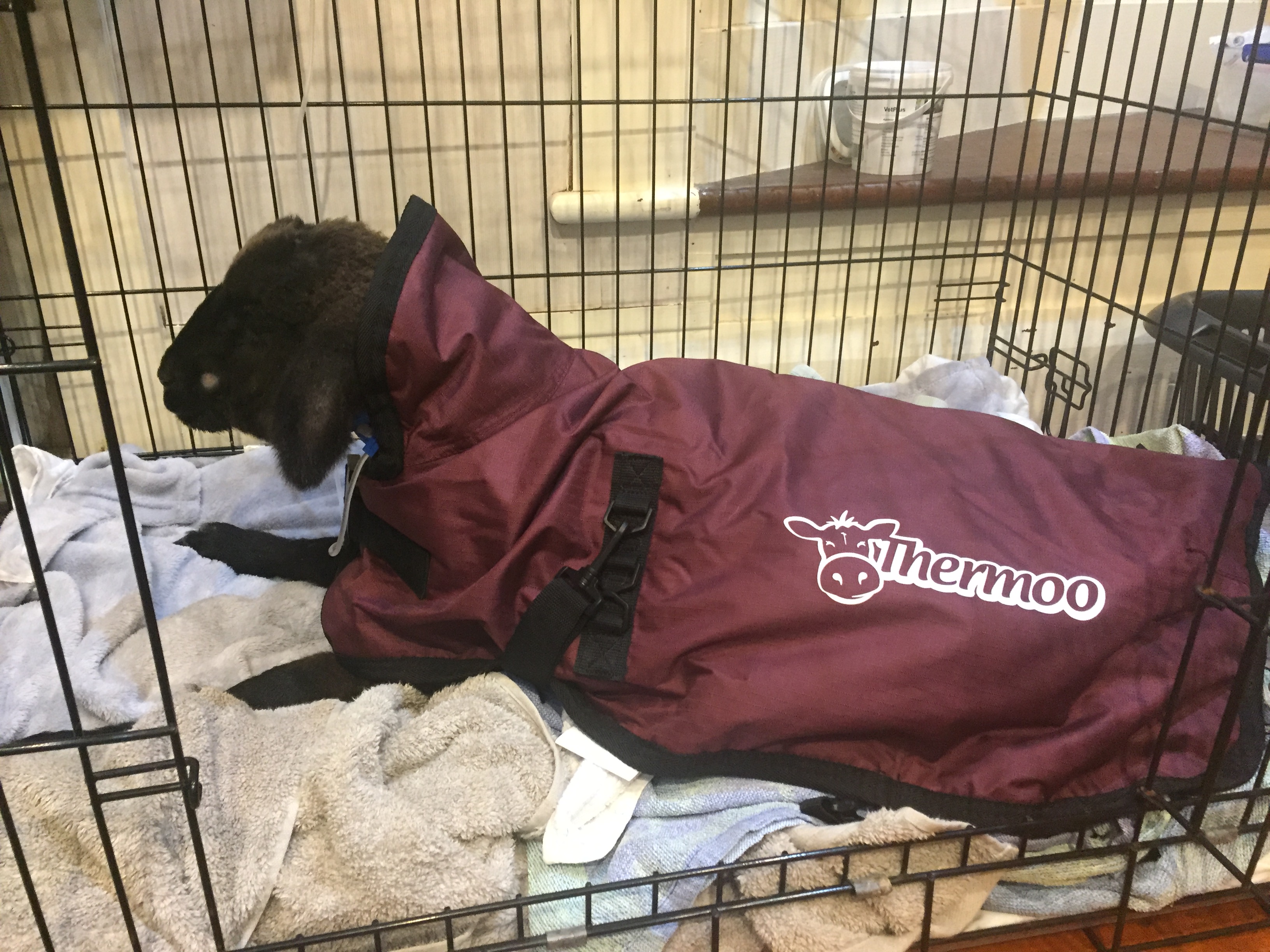

Shelton received supportive medication over the next 48 hours, which consisted of the following:
- twice daily duoject vitamin B1 supplementation into the muscle
- once daily dexamethasone short acting steroid infections to reduce brain swelling
- twice daily penicillin into the muscle
So what caused Shelton’s PEM?
PEM has been historically caused by a thiamine (B1 vitamin) deficiency, but it is now also widely recognised that ingesting plants or compounds high in sulphur can also cause PEM. PEM can be caused by the following factors:
- Ingesting mouldy or fungal contaminated feed can disturb the rumen microflora resulting in fungal rumenitis (see our previous discussion on ruminates). This can cause huge numbers of bad bacteria called thiaminase 1 and 2 to proliferate, which degrade thiamine, resulting in PEM.
- Ruminal acidosis disturbs the ruminal microflora, resulting in the destruction of thiamine and therefore PEM.
- Prolonged diarrhoea, such as from severe parasitism or coccidia
- Using certain drugs, such as levamisole, amprolium or thiabendazole. Therefore we always need to be careful when treating animals with diarrhoea, and precautionary supplementation with Duoject is always advised.
- Ingestion of plants containing thiamine (which destroys thiamine), such as bracken fern and rock fern.
- Feeding high quantities of grain, maize, sugar beet or sugar cane by products in the diet, which may be high in sulphur.
- Feeding excessive amounts of lucerne hay or chaff, as although lucerne is high in protein, it also contains high amounts of sulphur.
- Feeding brassicas such as turnips often contain high amounts of sulphur, and this in combination with their low fibre content can contribute to cerebral damage.
In Shelton’s case, the paddock he had been grazing in contained a large quantity of bracken fern. He had also been receiving the odd bit of lucerne chaff and grain. It is also a possibility that ingesting these feeds, along with a combination of rumenitis and subsequent acidosis, may have contributed to the onset of his PEM. At The Lifestyle Vet we have treated many PEM cases, many of which have been caused by a variety of underlying disease processes.
How is Shelton progressing?….
24 hours after Shelton was admitted for hospitalisation he started to regain his vision. Although he was still partially blind, he was able to navigate his way around the back yard and was no longer bumping into walls (see the video). After 48 hours Shelton was starting to eat and drink again. He regained his vision and was back to his usual naughty self bouncing around the backyard.
PEM can either be the primary disease process at play, or it can occur secondary to an underlying disease process if the animal is unwell and inappetent. For this reason, any unwell and inappetent ruminant will always benefit from having supportive vitamin B1 supplementation throughout the illness. At The Lifestyle Vet. we like to use a product called Duoject-B as it contains both B1 and B12 vitamins. The B1 component is the essential thiamine, whilst the B12 stimulates appetite.
We will be providing you with regular updates on Shelton’s recovery 🙂 Make sure you check out our Facebook for these updates 🙂
